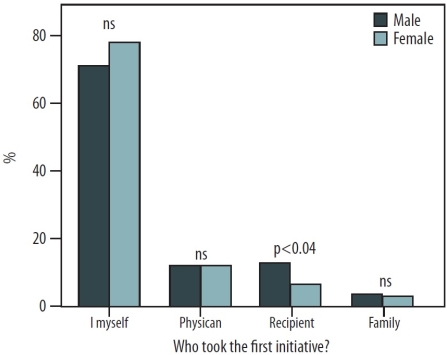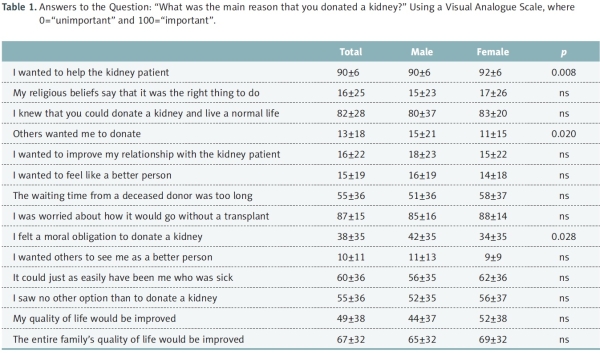Few Gender Differences in Attitudes and Experiences after Live Kidney Donation, with Minor Changes over Time
J. Wadström,1,2 B. von Zur-Mühlen,3 S. Yamamoto.3
1Department of Transplantation Surgery, Karolinska University Hospital, Huddinge, Sweden
2Department of Surgery/Transplantation, Hamad Medical Corporation, Doha, Qatar
3Department of Surgical Sciences, Uppsala University Hospital, Uppsala, Sweden.
Meeting: 2018 American Transplant Congress
Abstract number: 534
Keywords: Donation, Kidney, Nephrectomy, Psychosocial
Session Information
Session Name: Concurrent Session: Kidney Living Donation: Programmatic Issues
Session Type: Concurrent Session
Date: Tuesday, June 5, 2018
Session Time: 4:30pm-6:00pm
 Presentation Time: 5:30pm-5:42pm
Presentation Time: 5:30pm-5:42pm
Location: Room 6B
Background: We sought to study gender differences and differences over time with respect to demographics, relation to recipient, donor motives, and experiences of live kidney donation.
Material/Methods: In all, 455 consecutive live kidney donors, representing all of the donors at our center between 1974 and 2008 were considered for this study. There were 28 deceased donors and 14 donors who had moved abroad, leaving 413 donors; 387 (94%) agreed to participate in this study. A questionnaire was sent and the answers was analyzed for gender differences and, where relevant, for changes over time.
Results: In all sub-periods, female donors made up the majority (55–62%), except for sibling donors (45%) and child to- parent donors (40%). No significant gender differences were seen in perceived information given before donation. For males, it was more common that the recipient took the initiative to donate. For females, the motivation for donating was more frequently to help the recipient and because others wanted them to donate. For males, it was more common to feel a moral obligation. Post-operatively, females more frequently felt sad and experienced nausea, and more frequently felt that the donation had a positive impact on their lifes. With the introduction of minimally invasive surgical techniques, donors experienced fewer problems from the operation, with no gender difference. 

Conclusions: Females donate more frequently than males, a difference that did not change over time. Only a few gender differences were seen in donor motives and the donation experience; however, these differences may be relevant to address the gender imbalance in kidney donations.
CITATION INFORMATION: Wadström J., von Zur-Mühlen B., Yamamoto S. Few Gender Differences in Attitudes and Experiences after Live Kidney Donation, with Minor Changes over Time Am J Transplant. 2017;17 (suppl 3).
To cite this abstract in AMA style:
Wadström J, Zur-Mühlen Bvon, Yamamoto S. Few Gender Differences in Attitudes and Experiences after Live Kidney Donation, with Minor Changes over Time [abstract]. https://atcmeetingabstracts.com/abstract/few-gender-differences-in-attitudes-and-experiences-after-live-kidney-donation-with-minor-changes-over-time/. Accessed December 14, 2025.« Back to 2018 American Transplant Congress
